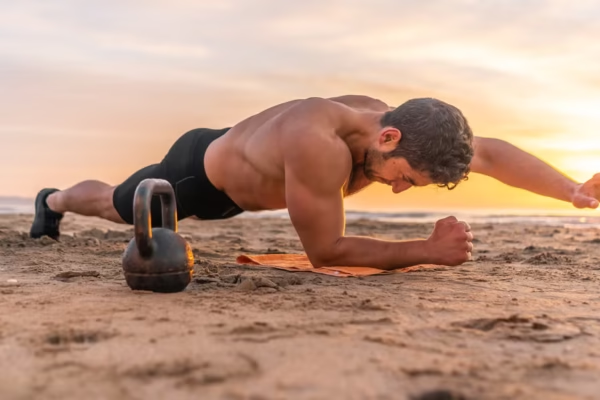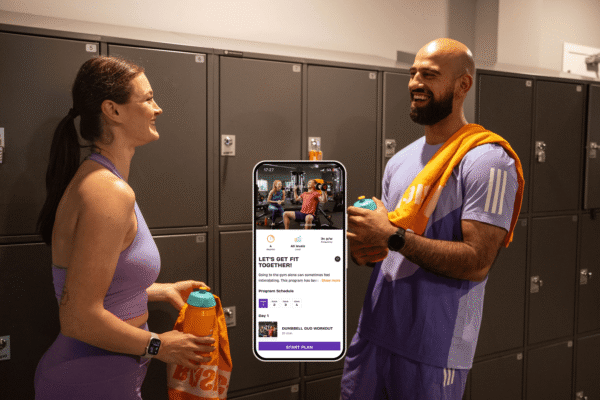Fitness and wellness management isn’t just about hitting the gym or eating kale salads—it’s about creating a sustainable lifestyle that makes you feel vibrant and energized. Whether you’re a busy professional, a parent juggling a million tasks, or someone looking to reclaim their health, managing your fitness and wellness is the key to unlocking your best self. In this article, I’ll walk you through what fitness and wellness management really means, how to implement it in your daily life, and the best tools and resources to make it stick—all while sharing some personal stories to keep it real.
What Is Fitness and Wellness Management?
Fitness and wellness management is the art of balancing physical activity, nutrition, mental health, and lifestyle choices to achieve optimal health. It’s not about quick fixes or crash diets; it’s a holistic approach that considers your body, mind, and environment. Think of it as being the CEO of your own well-being, making intentional choices to feel good inside and out.
Why It Matters More Than Ever
In today’s fast-paced world, stress, sedentary jobs, and endless screen time can take a toll. I remember when I was stuck in a desk job, surviving on coffee and takeout—my energy was nonexistent, and I felt like I was running on fumes. A structured fitness and wellness plan changed that, and it can for you too.
The Core Components of Fitness and Wellness Management
To manage your fitness and wellness effectively, you need a roadmap. Here are the key pillars to focus on, each backed by practical steps to make them part of your life.
Physical Fitness: Moving Your Body with Purpose
Physical fitness isn’t just about looking good—it’s about feeling strong and capable. Whether it’s strength training, yoga, or a brisk walk, regular movement boosts your mood, energy, and longevity. A 2025 study highlighted that consistent exercise, even just 30 minutes daily, can improve mental clarity and reduce stress by up to 40%.
Choosing the Right Workout for You
Not every workout fits every lifestyle. I used to force myself into high-intensity interval training (HIIT) because it was trendy, but it left me exhausted. Switching to a mix of yoga and hiking felt like a gift to my body. Find what you love—maybe it’s dance, cycling, or swimming—and make it a non-negotiable part of your week.
Nutrition: Fueling Your Body Right
Nutrition is the foundation of wellness. It’s not about cutting carbs or chasing fads—it’s about eating foods that nourish you. A balanced diet with lean proteins, healthy fats, and colorful veggies can transform how you feel. I learned this the hard way after years of “healthy” cereal bars that were basically candy in disguise.
Meal Planning Made Simple
Meal planning saves time and keeps you on track. Start with a weekly menu, batch-cook on Sundays, and keep it simple—think grilled chicken, roasted veggies, and quinoa. Tools like MyFitnessPal or Yummly can help you track nutrients and find recipes tailored to your goals.
Mental Health: Nurturing Your Mind
Your mental health is just as important as your physical health. Stress management, mindfulness, and quality sleep are non-negotiables. I once went through a phase where I was sleeping five hours a night and felt like a zombie. Adding meditation and a strict bedtime routine was a game-changer.
Practical Mindfulness Tips
You don’t need to meditate for hours to see benefits. Try five minutes of deep breathing or a gratitude journal before bed. Apps like Headspace or Calm offer guided sessions that fit into even the busiest schedules.
Lifestyle Habits: Building a Sustainable Routine
Fitness and wellness management thrives on consistency. Small habits—like drinking water first thing in the morning or taking a 10-minute walk after dinner—add up. I started leaving my running shoes by the door as a visual cue, and it’s shocking how such a tiny trick keeps me moving.
Creating Habits That Stick
Use the “habit stacking” method: pair a new habit with an existing one. For example, do a quick stretch while your coffee brews. Over time, these micro-habits become second nature.
Comparing Fitness and Wellness Approaches
Not sure where to start? Here’s a comparison of popular fitness and wellness approaches to help you decide what fits your lifestyle.
| Approach | Focus | Best For | Time Commitment | Cost |
|---|---|---|---|---|
| Gym Membership | Strength training, cardio | Structured workout enthusiasts | 3–5 hours/week | $30–$100/month |
| Home Workouts | Bodyweight exercises, flexibility | Busy schedules, budget-conscious | 1–3 hours/week | $0–$50 (equipment) |
| Yoga/Pilates | Mind-body connection | Stress relief, flexibility | 2–4 hours/week | $10–$20/class |
| Wellness Coaching | Holistic health, accountability | Beginners, goal-driven individuals | 1–2 hours/week | $50–$150/session |
Pros and Cons of Each Approach
- Gym Membership
- Pros: Access to equipment, professional trainers, community vibe.
- Cons: Can be expensive, time-consuming, and intimidating for beginners.
- Home Workouts
- Pros: Convenient, cost-effective, customizable.
- Cons: Limited equipment, requires self-motivation.
- Yoga/Pilates
- Pros: Improves flexibility, reduces stress, beginner-friendly.
- Cons: Classes can be pricey, less focus on cardio.
- Wellness Coaching
- Pros: Personalized plans, accountability, holistic focus.
- Cons: Higher cost, requires commitment to sessions.
Where to Get Fitness and Wellness Resources
Finding the right tools and communities can make all the difference. Here’s where to look:
- Online Platforms: Websites like FitOn or Peloton Digital offer free or affordable workouts for all levels.
- Local Gyms and Studios: Search for “gyms near me” or “yoga studios in [your city]” on Google Maps to find local options.
- Wellness Apps: Apps like MyFitnessPal, Headspace, or Strava track progress and keep you motivated.
- Community Groups: Join local running clubs or wellness meetups through platforms like Meetup.
Best Tools for Fitness and Wellness Management
Investing in the right tools can streamline your journey. Here are some top picks for 2025, based on user reviews and functionality:
- Wearables: The Fitbit Versa 4 or Apple Watch Series 10 tracks steps, heart rate, and sleep. A 2025 study showed wearables improve exercise frequency in older adults.
- Nutrition Apps: MyFitnessPal and Cronometer help you log meals and monitor macros.
- Meditation Apps: Calm and Insight Timer offer guided sessions for stress relief.
- Fitness Equipment: Resistance bands, a yoga mat, or a kettlebell are affordable and versatile for home workouts.
Why Tools Matter
I used to scoff at fitness trackers, thinking they were just fancy step-counters. But when I started using one, I realized how much it helped me stay accountable. Seeing my daily steps or sleep patterns gave me a nudge to do better.
People Also Ask (PAA)
Here are answers to common Google questions about fitness and wellness management:
- What is the difference between fitness and wellness?
Fitness focuses on physical health through exercise and nutrition, while wellness encompasses mental, emotional, and social well-being. Together, they create a balanced lifestyle. - How do I start a fitness and wellness routine?
Start small: set a goal like walking 20 minutes daily, drinking more water, or meditating for five minutes. Use apps or a journal to track progress and stay consistent. - What are the best apps for fitness and wellness?
Popular apps include MyFitnessPal for nutrition, FitOn for free workouts, and Headspace for meditation. Choose based on your goals—nutrition, exercise, or mindfulness. - How long does it take to see results from a wellness routine?
Results vary, but most people notice improved energy within 2–4 weeks. Physical changes, like weight loss or muscle gain, may take 8–12 weeks with consistency.
SEO Strategies for Fitness and Wellness Businesses
If you’re running a fitness or wellness business, visibility is everything. Here’s how to optimize your online presence, based on recent SEO trends.
Keyword Research for Fitness Businesses
Use tools like Google Keyword Planner or Ahrefs to find high-traffic keywords like “gym near me” or “yoga classes in [city].” Long-tail keywords, like “best personal trainer for beginners,” attract motivated clients.
Why Long-Tail Keywords Work
Long-tail keywords have lower competition and higher conversion rates. For example, “24/7 fitness center in Chicago” targets local searchers ready to sign up, unlike the generic “fitness center.”
Content Creation Tips
Create blog posts, videos, or infographics addressing common fitness questions, like “How to start strength training” or “Benefits of mindfulness.” Optimize with keywords in titles, headings, and meta descriptions.
Building Authority with Content
When I started my wellness blog, I wrote about my own journey with running. Sharing personal stories not only built trust with readers but also boosted my site’s ranking for niche keywords like “beginner running tips.”
FAQ Section
Q: How often should I exercise for optimal fitness?
A: Aim for at least 150 minutes of moderate aerobic activity or 75 minutes of vigorous activity per week, plus strength training twice a week, per CDC guidelines.
Q: Can I manage fitness and wellness on a budget?
A: Absolutely! Use free apps like FitOn, walk or run outdoors, and cook simple, whole-food meals. Local community centers often offer affordable classes.
Q: How do I stay motivated to stick to a wellness routine?
A: Set small, achievable goals, track progress with apps, and join a community for accountability. Reward yourself for milestones, like a new workout outfit.
Q: What’s the best way to track my wellness progress?
A: Use a journal or apps like Strava or MyFitnessPal to log workouts, meals, and mood. Wearables like Fitbit provide real-time data to keep you on track.
Q: How can a fitness business improve its online presence?
A: Optimize your website with local SEO, create engaging content, and leverage Google Business Profile for reviews and visibility. Tools like Ranktracker can monitor performance.
Bringing It All Together
Fitness and wellness management is about taking control of your health with intention and joy. It’s not about perfection—it’s about progress. I’ve seen it in my own life: small steps, like swapping soda for water or taking a walk to clear my head, led to big changes. Start where you are, use the tools and strategies above, and build a routine that feels like you. Whether you’re lacing up your sneakers for the first time or helping others find their path as a fitness professional, the journey to wellness is worth every step.






